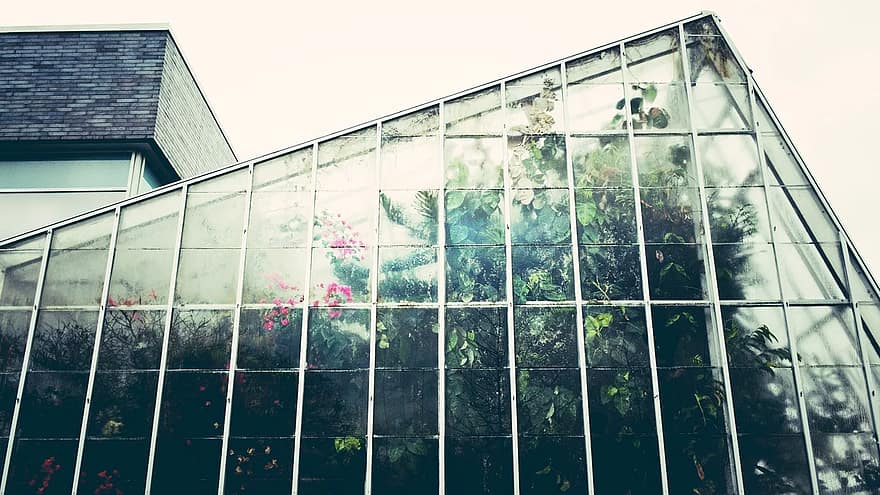There are some best ways on how to cool a greenhouse without electricity; like maintaining adequate ventilation, periodically wetting your greenhouse surfaces or damping down, and blocking solar radiation through the strategic use of shade.
The temperature in those hot summer days can be a problem when it comes to ventilation in your greenhouses—thus making the electricity consumption for the ventilation a lot higher.
In this article, you will know the best means on how to cool a greenhouse without electricity. Just dig deeper!
Contents
Methods Of Cooling A Greenhouse Without Electricity
Are you tired of the rising bills of electricity due to the ventilation of your greenhouses? Looking for a way to reduce those bills and provide adequate ventilation for your greenhouse at the same time? Go green all the way.
Here is a list of the best ways on how to cool a greenhouse without electricity!
#1 Having vents
What we need are vents. Vents on the roof and high up on the walls to give the heat trapped inside to escape.
The heat leaving the vents will create a vacuum near the bottom of the greenhouse. Then we’ll want more vents for a more relaxed air from outside can enter. This method best works when there is a decently strong wind blowing.
Manual vents can be opened and closed manually. You can open them during the day and close them at night, where it gets colder.
But how big do the vents should be? Have your overall ventilation area equal to 40% of the scope of your greenhouse floor. So it is recommended 20% for the roof and 20% on the walls.
A wireless thermometer is also suggestible as it monitors the temperature change and sends it to your phone or computer. That way, you will be notified whether to open or close the vents.
On the other hand, you can also use automatic vents that have wax cylinders in their structure. They expand or shrink according to the increase of the temperature.
#2 Damping down
The process of damping down is simple but very effective. All you need to do is damp down hard surfaces with your hose and spray. Stone walks, blocks, woods should be sprayed down with water a couple of times a day so that the evaporation of water will create a humid environment
During hot periods, increased humidity slows down the transpiration rate. You can think of it as the plats sweating. If the air around the leaves is already full of water, the water inside tends to stay. And keeping the water inside the plants means more supply for their food manufacturing process!
There is no limit on how much you damp down your greenhouse. But for the sake of convenience, doing it twice a day is favorable. One when opening the vents during the day and another when closing the vents down. Totally electricity independent, right?
#3 Water the plants
Of course, plants need water to grow. Watering is like damping. The difference is that in damping, you apply it on hard surfaces tool to increase the water evaporation for a more humid place.
Watering the plants should be done at least twice a day because plants need water to process their food.
So it is a must that you will not forget to water your plants regularly. What is the use of cooling your greenhouse when your plants are dying off due to dehydration?
#4 Throwing shade
All the heat-related problems your plants face during summer are caused by solar radiation or the sunlight. So it is one of the reasons to block the incoming sunlight to keep the temperatures down. This is where shading comes in handy.
You don’t need to cover your plants completely but shade them with curtains, cloth, or paint. Remember! Plants need sunlight too. You do not have to block all the sunlight.
When using shading cloths, you can place them inside or outside. It’s your choice. If you are expecting heavy wind or rain, inside will be better but in temperate conditions, having them out helps reduce heat even more.
When using shade paint, apply it outside your greenhouse like regular coat paint. The color needs to be reapplied every year. But you can’t adjust the amount of sunlight you are blocking and letting in.
Direct sunlight should just be covered to lessen the temperature of your plant’s experience. If you block all the sunlight, your plants will surely cool down and be dead at the same time. We do not want that.
This might cost a little bit, but it is much better than using electricity. Both budget and environment friendly.
Conclusion
Having a green thumb should also act green. You can try these methods that we’ve discussed on how to cool a greenhouse without electricity.
Nothing beats the feeling of lessening those electricity bills you’ve collected throughout the years, cooling your greenhouses. Some methods may cost you, but it is much better than the statements you contained when cooling your greenhouse.
We hope we helped you with the ways on how to cool down a greenhouse without electricity. Both budget and environment-friendly methods of keeping your greenhouse cooled!
